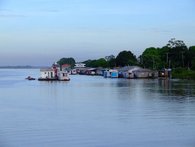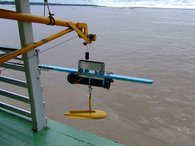Global Matter Cycles
Background
Quantifying globally how matter (e.g. elements, sediment, water) is cycled through Earth´s reservoirs (e.g. continental crust, oceans, biosphere) provides an important basis for understanding how landscapes and all matter contained within them develop and change over time. We look for example at element or isotope cycling in deep time or how the sedimentary and the dissolved reservoirs interact over large spatial scales, or what happens at the land-ocean interface. By using systems that are large enough to be globally representative (such as the Amazon or Chanjiang rivers, or deep marine cores covering the entire Cenozoic), we can infer globally relevant fluxes, for example how much CO2 is drawn down from the atmosphere. With regards to erosion, we can follow the path of sediments from their formation in mountainous soils via their deposition in the lowlands, where they form fertile soils again, and finally to the oceans, where nutrients can be released. To quantify changes in matter cycling through time, it is crucial to know how much sediment is produced over a certain time period, how long the sediment is stored somewhere, what chemical reactions are taking place, and if the sediment is recycled. Our isotope methods allow to quantify such rates and time spans using cosmogenic nuclides, and we can fingerprint certain processes through shifts in the isotopic composition.
Scientific key questions
- How long is sediment being transferred from the mountainous source to the lowland sink?
- What is the isotope shift associated with secondary clay formation?
- How often are certain elements (re-)cycled via vegetation before being exported in the dissolved load of a river?
Related projects



